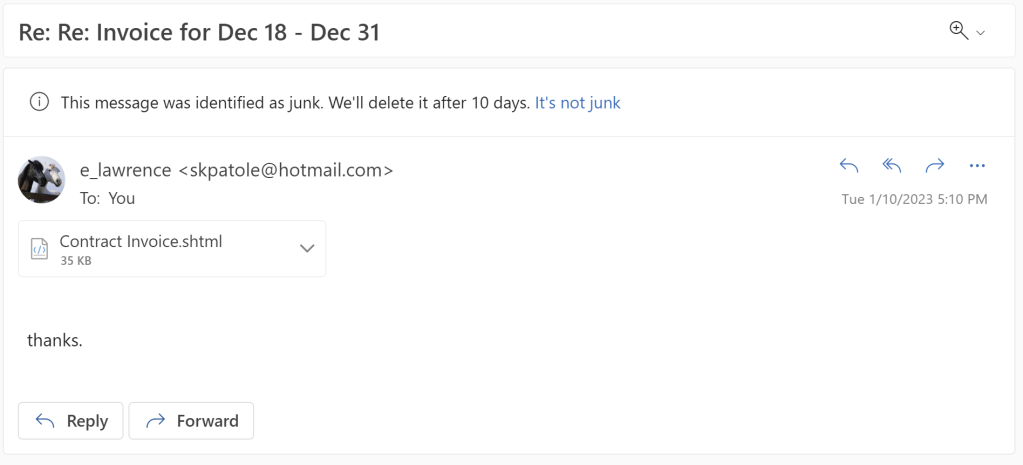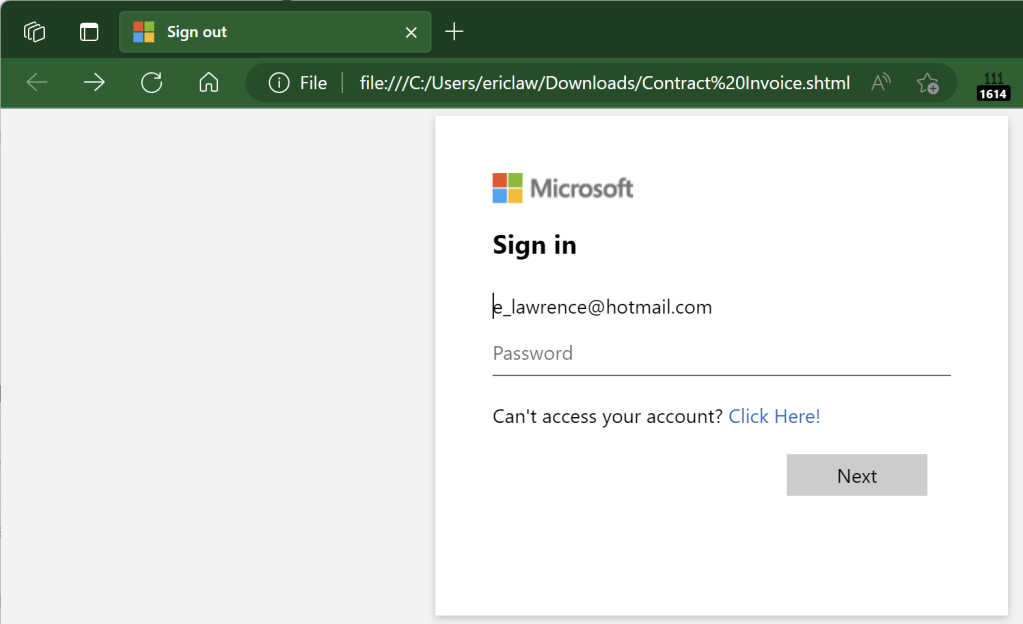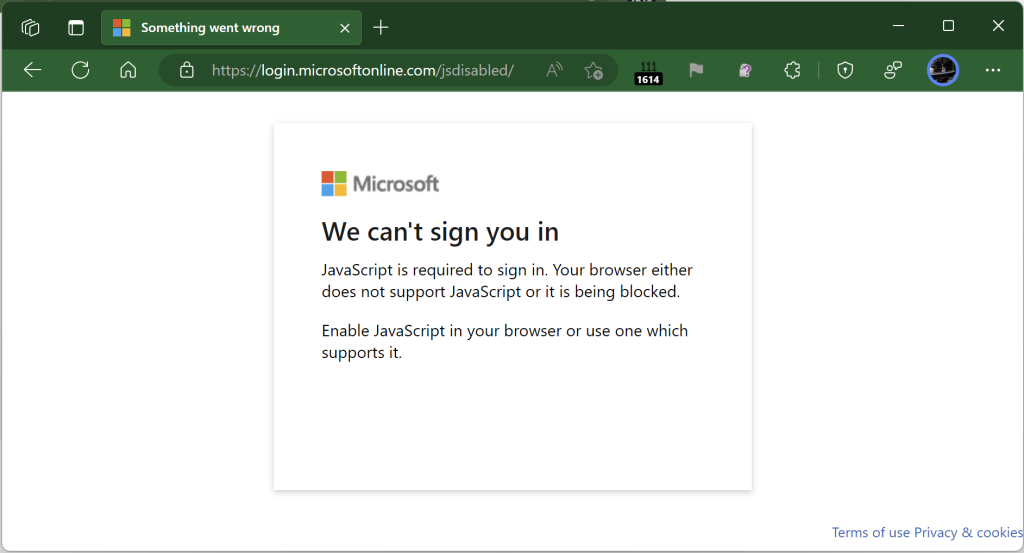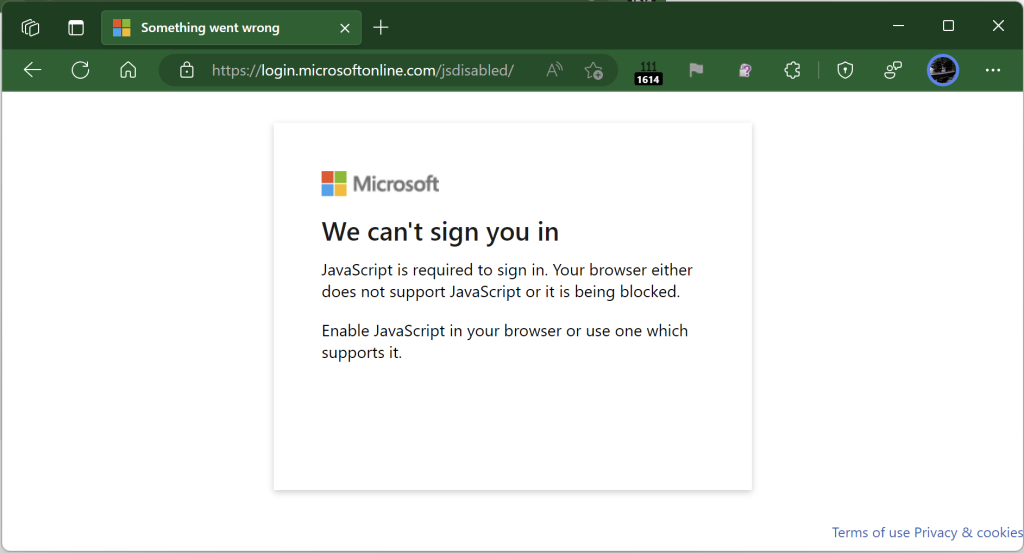One attack technique I’ve seen in use recently involves enticing the victim to enter their password into a locally-downloaded HTML file.
The attack begins by the victim receiving an email with a HTML file attachment (for me, often with the .shtml file extension):

When the user opens the file, a credential prompt is displayed, with the attacker hoping that the user won’t notice that the prompt isn’t coming from the legitimate logon provider:

Notably, because this file is opened locally, the URL refers to a file path on the local computer, and as a consequence the URL will not have any reputation in anti-phishing services like Windows SmartScreen or Google Safe Browsing.
A HTML form within the file targets a credential collection endpoint on infrastructure which the attacker has either rented or compromised on a legitimate site:

If the victim is successfully tricked into supplying their password, the data is sent in a HTTP POST request:
To help prevent the user from recognizing that they’ve just been phished, the attacker then redirects the victim’s browser to an unrelated error page on the legitimate login provider:
The attacker can later collect the database of submitted credentials from the collection endpoint at their leisure.
Passwords are a terrible legacy technology, and now that viable alternatives now exist, sites and services should strive to eliminate passwords as soon as possible.
-Eric
Impatient optimist. Dad. Author/speaker. Created Fiddler & SlickRun. PM @ MSFT '01-'12, and '18-, working on Office, IE, Edge, and Web Protection. My words are my own, I do not speak for any other entity. View more posts


